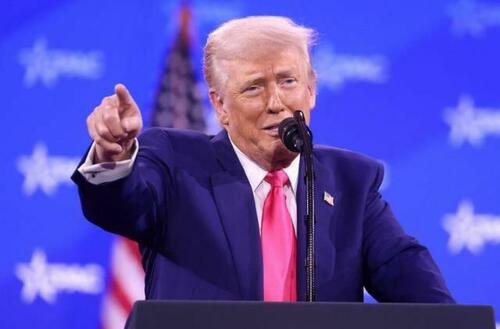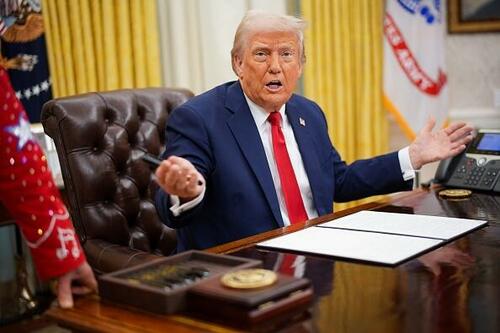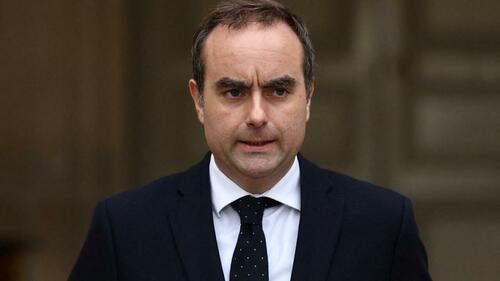Mamdani Suggests NYPD May Arrest ICE Agents Enforcing Federal Law
During an interview with MSNOW Senior Political and National Reporter Jacob Soboroff, New York City Mayor-Elect Zohran Mamdani faced pointed questions about whether his rhetoric on accountability extends to federal immigration enforcement, and Mamdani suggested his police force might arrest federal officers enforcing federal immigration laws.
Soboroff didn't dance around the issue, asking directly whether there's a scenario where the NYPD under Mamdani's leadership could arrest ICE agents on city streets for their treatment of illegal immigrants.
“I've also heard you say that no one is above the law and anyone can be held accountable, and that goes for the president of the United States, and it also goes for ICE agents,” Soboroff began.
“I don't want to put words in your mouth, but is there a scenario in which the NYPD, under you, could arrest ICE agents on the streets of New York for their behavior towards immigrants?”
Mamdani initially tried to avoid answering the question.
“My focus is for the NYPD to not be assisting ICE in their immigration enforcement and to actually be following the policies of sanctuary city law,” he said.
But he didn't stop there.
"I do believe, however, that, for the law to have meaning, there has to be accountability for all of us," Mamdani continued, framing the issue as one of equal justice rather than what it actually is—a direct challenge to federal authority.
He insisted this accountability must apply "no matter who we're referring to," suggesting ICE agents enjoy no special status in his vision of law enforcement.
Soboroff, however, seemed to want a more concrete answer and pressed about whether ICE agents could actually be arrested by NYPD officers.
“So, in other words, there is a circumstance in which if an ICE agent violates someone's rights here in New York City, they could be arrested by the police department?” he asked.
Mamdani did not deny it.
"I think if an ICE agent is breaking the law, then that is a law that they should be held accountable to," he declared.
Zohran Mamdani says he will not allow NYPD to assist ICE in NYC.
— Wall Street Mav (@WallStreetMav) December 10, 2025
When asked about ICE entering the subways, Mamdani says it’s his job to “make sure that doesn’t take place.”
He says, “what New Yorkers need from a federal administration is the kind of partnership that will… pic.twitter.com/Ej36h2iig9
Though he didn’t explicitly say so, the implication was clear: federal immigration officers could be arrested by New York City police officers if Mamdani decides they've crossed whatever line he chooses to draw. Mamdani is clearly signaling that preventing the New York Police Department from assisting ICE agents isn’t enough. Mamdani is talking about active interference by using the NYPD as a barrier to block federal immigration enforcement and even arrest ICE agents carrying out lawful deportation orders.
Mamdani’s plan puts him in direct conflict with the Constitution. The Supremacy Clause establishes that federal law takes precedence over conflicting state or local laws, and immigration enforcement is clearly a federal responsibility. If the NYPD starts blocking ICE or arresting federal agents carrying out lawful deportations, it isn’t “standing up for immigrants”—it’s defying the law. Local policy can’t override federal authority, and any attempt would spark a legal battle the city would almost certainly lose. Beyond the constitutional issues, the practical consequences would be chaotic. Mamdani is essentially declaring himself the final judge of whether federal officers can operate in New York City, ignoring that ICE agents answer to Washington, not City Hall.
This is not the first time Mamdani has anointed himself the final arbiter over the law in New York City. He previously warned he intends to enforce the International Criminal Court’s arrest warrant for Israeli Prime Minister Benjamin Netanyahu if he ever sets foot in the city. He staked out that position even before taking office, and he hasn’t backed away from it.
"I’ve said time and again that I believe this is a city of international law, and being a city of international law means looking to uphold international law," he said. "And that means upholding the warrants from the International Criminal Court, whether they’re for Benjamin Netanyahu or Vladimir Putin,” he said last month, even though he doesn’t have the legal authority to do so.
“New York City mayor does not have the power to do that,” New York Governor Kathy Hochul admitted earlier this month.
Netanyahu has also laughed off Mamdani’s threats. Appearing via video at the New York Times DealBook, Netanyahu said that the threat wouldn’t keep him away from New York City. “Why don’t you wait and see?” he said. “Yes, I’ll come to New York.”
Mamdani’s approach is a direct challenge to the country’s constitutional order. By positioning the NYPD to block or even arrest federal agents, potentially, he risks a showdown with the federal government that the city is almost certain to lose. New Yorkers should be wary of a mayor who treats his own judgment as superior to the law, because when local officials ignore federal authority, the result is chaos, not justice.
Tyler Durden Sat, 12/13/2025 - 16:55



 Image source: US Navy photo by Petty Officer 2nd Class William Farmerie
Image source: US Navy photo by Petty Officer 2nd Class William Farmerie Image source: AFP
Image source: AFP
 Image: Gage Skidmore via
Image: Gage Skidmore via 







 Source: CNN
Source: CNN




Recent comments